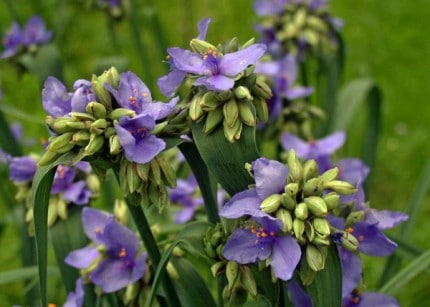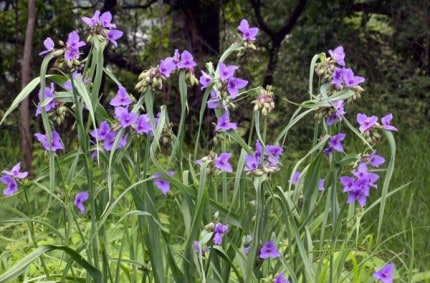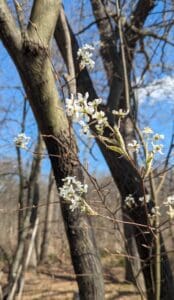
(Chelsea Update would like to thank Tom Hodgson and the Waterloo Natural History Association for the information and the photos in this column.)
After snakes, perhaps spiders strike fear into the hearts of men (and women) more than any other land creature. However, there is one that all can enjoy without fear, because it is not a venomous creature at all, but a plant.
Spiderwort is a plant whose leaves are arranged around its blossoms in a way that resembles a crouching spider. OK that explains the spider part but what about the wort?
A wort is a bump on the skin, right? Actually that skin lesion is spelled wart.

Wort is an old English word meaning plant. So in modern terms St. John’s wort is actually St. John’s plant, and spiderwort is spider plant. Regardless of what you call it or how you spell the name, spiderwort is now in bloom and will be for the next month. This is a fairly common plant of open fields and roadsides.
But it is particularly abundant in the restored prairie site at the Discovery Center.
In fact, the Discovery Center prairie is really coming into its own at this time. In addition to spiderwort, black-eyed Susan, butterfly weed and common milkweed are also in bloom. The fragrance of the milkweed blossoms permeate the air along the black-top trail that travels through the prairie. This smooth, hard surface trail is accessible to everyone including those pushing strollers, using walkers or riding in wheelchairs. So there is no excuse for not coming out to enjoy these summer wildflowers.
Spiderwort blossoms have some unique characteristics. Each lasts just a day and is only open in the morning during sunny weather, but may bloom into the afternoon on cloudy days. Fortunately, spiderwort puts out many blossoms over the period of about a month, so there are always some of these bright, blue flowers visible in late June and July.

Bumble bees are its most important pollinators as they become active earlier in the morning and at cooler temperatures than honey bees.
Spiderwort adapts well to cultivation, is easy to grow, and can be an attractive garden plant. It grows in either full sun or partial shade. Cutting stems back after flowering often stimulates re-blooming. Spiderworts can be propagated by division of the rootstock or by seed. Plants should not be collected from the wild, however, on public lands where such removal is strictly forbidden.
There are several species of spiderwort found across the country. Sadly, the one found in Michigan goes by the official name of Ohio Spiderwort. Not something that either Spartan or Wolverine fans will be very excited about. Well at least it’s not a buckeye.















